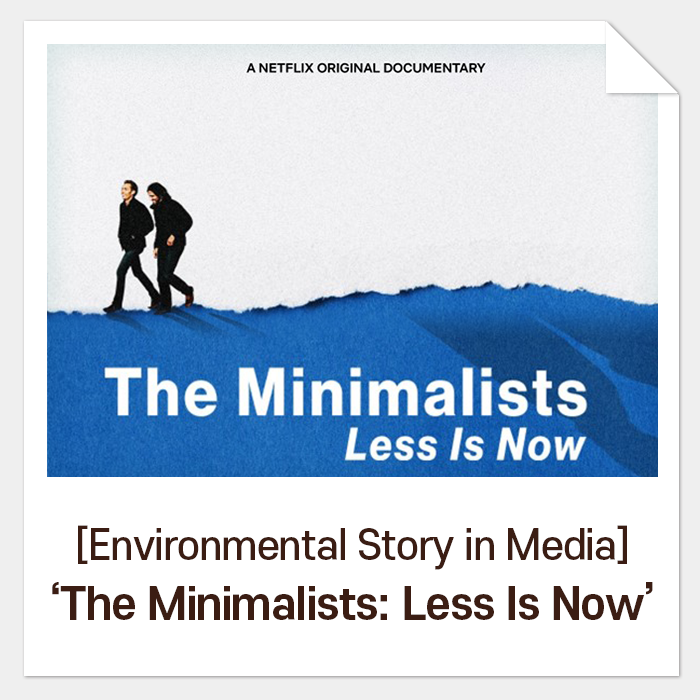California to Ban Groundless ‘Eco-friendly’ Marketing!
As the world has become more aware of how closely we are connected to nature, each country starts to implement resolute policies to stop pollution and preserve what is left. Among them, California is surely the leading state in the U.S. to act fastest for the environment. The European Commission passed the introduction of the plastic tax in 27 member countries and China recently announced a stringent regulatory policy to limit the production and sale of undegradable single-use plastic by stages.
While California strives
for the sustainable society by emphasizing eco-friendly consumption, they
introduced more delicate and specific legislation in late September, setting
stringent standards and requirement to promote a product’s material and organic
recyclability. Let’s take a close look at California’s effort to achieve the
resource circulation cycle.
1. ‘Biodegradable’
Product? Prove it with accurate data first!
The state of
California announced the legislation of AB2287 to ban the promoting statement
such as ‘biodegradable’ or ‘compostable’ on plastic products on September 29th.
It is to limit indiscreet eco-friendly marketing and to minimize any chance to
send confusing messages to customers.
As the law has been passed, the use of words such as home compostable, marine compostable, or biodegradable is strictly banned, for they could be misinterpreted as if the products were easily degraded without special treatment in landfills or under any other conditions.
In addition, California will update specific certificates and the institutions as well as ASTM standards to help verifying the environmentally friendly properties of a product and will continue establishing systemic changes accordingly.
Therefore, a
plastic product manufacturer will reexamine the marketing words used to promote
their product’s environment-friendliness and need to be ready with clear
evidence.
2. Increase
the recycled contents! Activate the Market for Recyclable Waste
California took an action on not only organic recyclability but also material recyclability. ‘The Circular Economy and Pollution Reduction Act (AB793)’ made it mandatory for single-use packaging and food manufacturers to minimize the amount of waste produced.
This law may have
been accelerated by China’s ban on certain recyclable waste, started on January,
2018. It resulted in the plastic waste losing its value as a resource and a
number of collecting and recycling centers had shut down as a consequence.
Since then, the
needs of the policy toward waste management have been demanded more than ever
and AB793 was suggested as the solution. According to the Act, all the plastic
beverage containers sold in the state must contain at least 15% of the recycled
material from January 1st in 2022, and the content rate should be increased to
25% by 2025 and 50% by 2030. The law also reflects the state government’s ambitious
goal to cut down the amount of virgin plastic produced by requiring a product
to be designed with recyclable or compostable materials.
It is expected to revitalize a recyclable waste market with AB793 implemented. Although the recyclable waste has been collected from the curbside(kerbside) collecting system in the U.S., the practical recycling rate was remarkably low, for there have not been great demands on recycled content in the market. In fact, EPA(Environmental Protection Agency) announced that only 27% of glass, 16% of paper packaging, and 9% of plastic is recycled.
When the new legislation is applied, however, the needs of recyclable waste will be increased and so will the collecting rate. As the recyclable waste obtains value as commodities, it would make the market for waste resources rapidly grow. The legislation is therefore recognized as a significant starting point for the circular economy along with the improvement of collecting rate.
There are some
critics concerning that such strict regulations may result in expense increase
and that it is not a practical idea to increase the recycling rate by
controlling plastic production. Yet, witnessing the beautiful beaches being
covered with plastic waste and picturesque mountains being burned for months
now due to the pollution, California state seems to keep moving forward for the
environment.
3.
California’s Sensible Change, and The Decision Waiting for Us
There have been around 8,400 forest fires in California this year. Some of the fires are still burning nature and the extent of the damage so far equals to the area of Gangwon Province in Korea. Experts explain that it is highly likely that such disasters more frequently occur in the future and this is because of the environment polluted from our carelessness and selfishness, just as COVID19 that snatched the year of 2020 from the whole world.
California is where scores high for googling ‘environment-friendly’, which means the community members are greatly interested in the environment and care for it. It is surely important for the Government to take political action such as establishing relevant laws and regulations. At the same time, however, we need to aware that it takes every individual’s small, yet meaningful efforts to accomplish a sustainable society. There are still many ways for us to save the earth like carrying a reusable bag, shortening the shower, doing the laundry after gathering some, and buying local foods.











Comments
Post a Comment